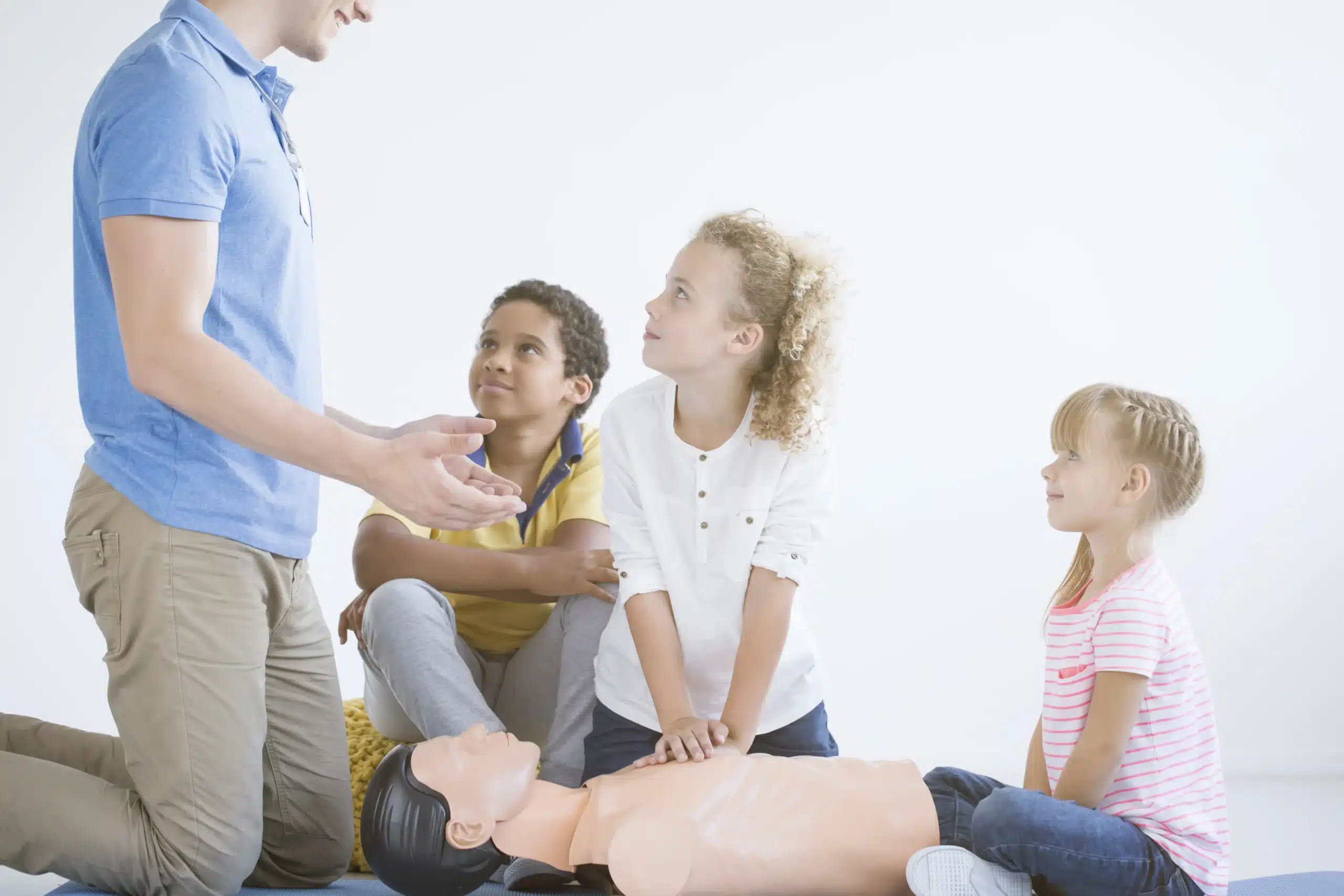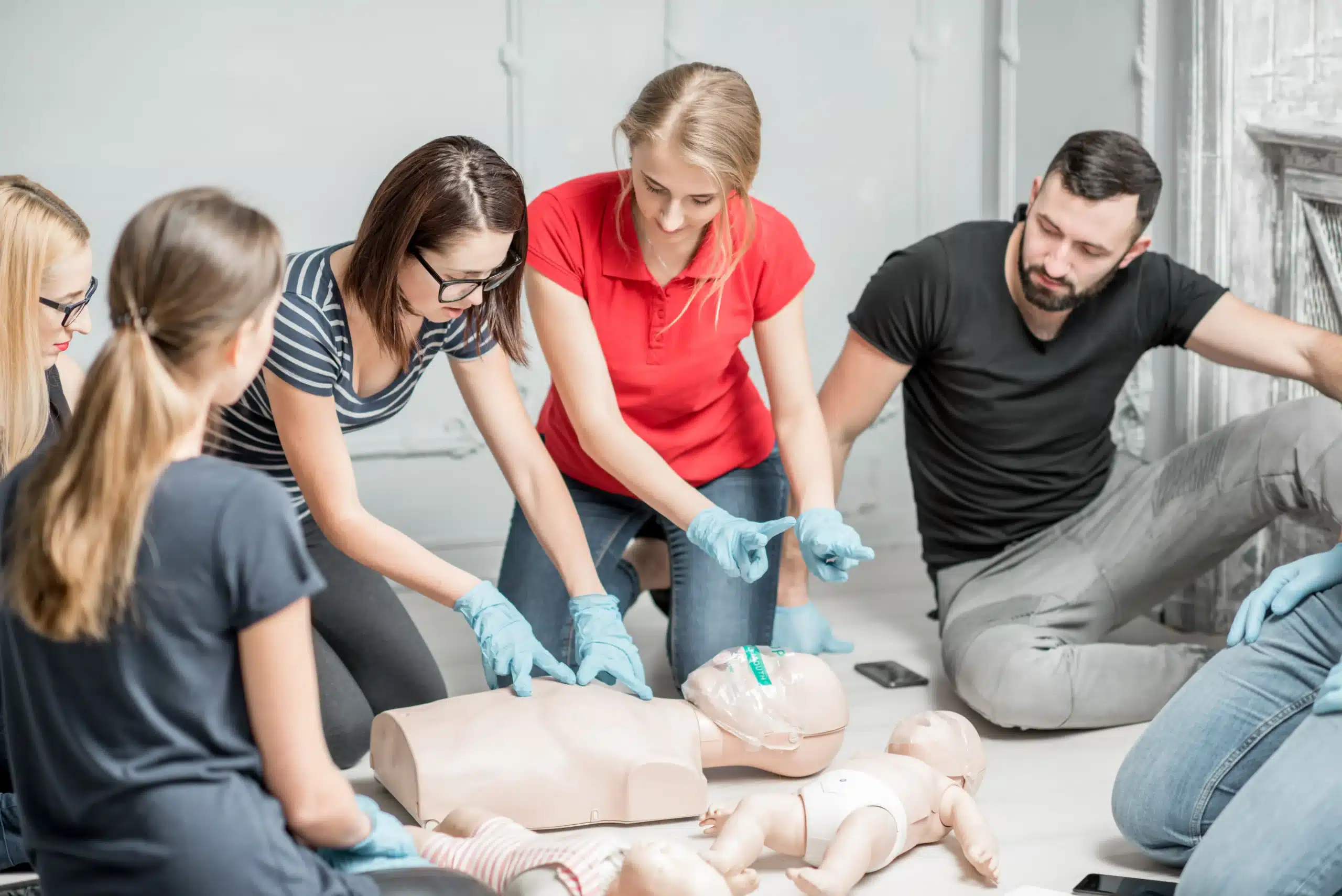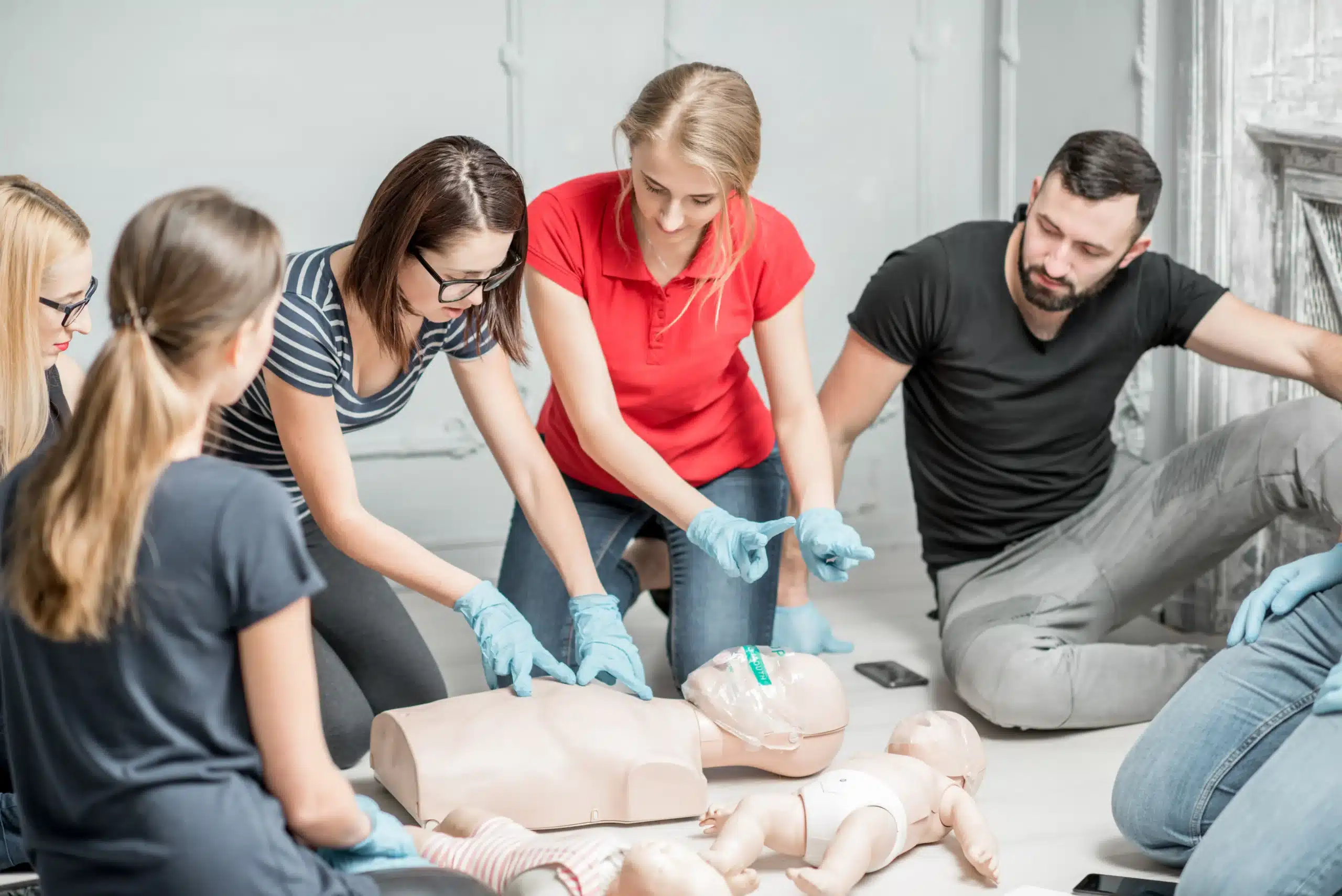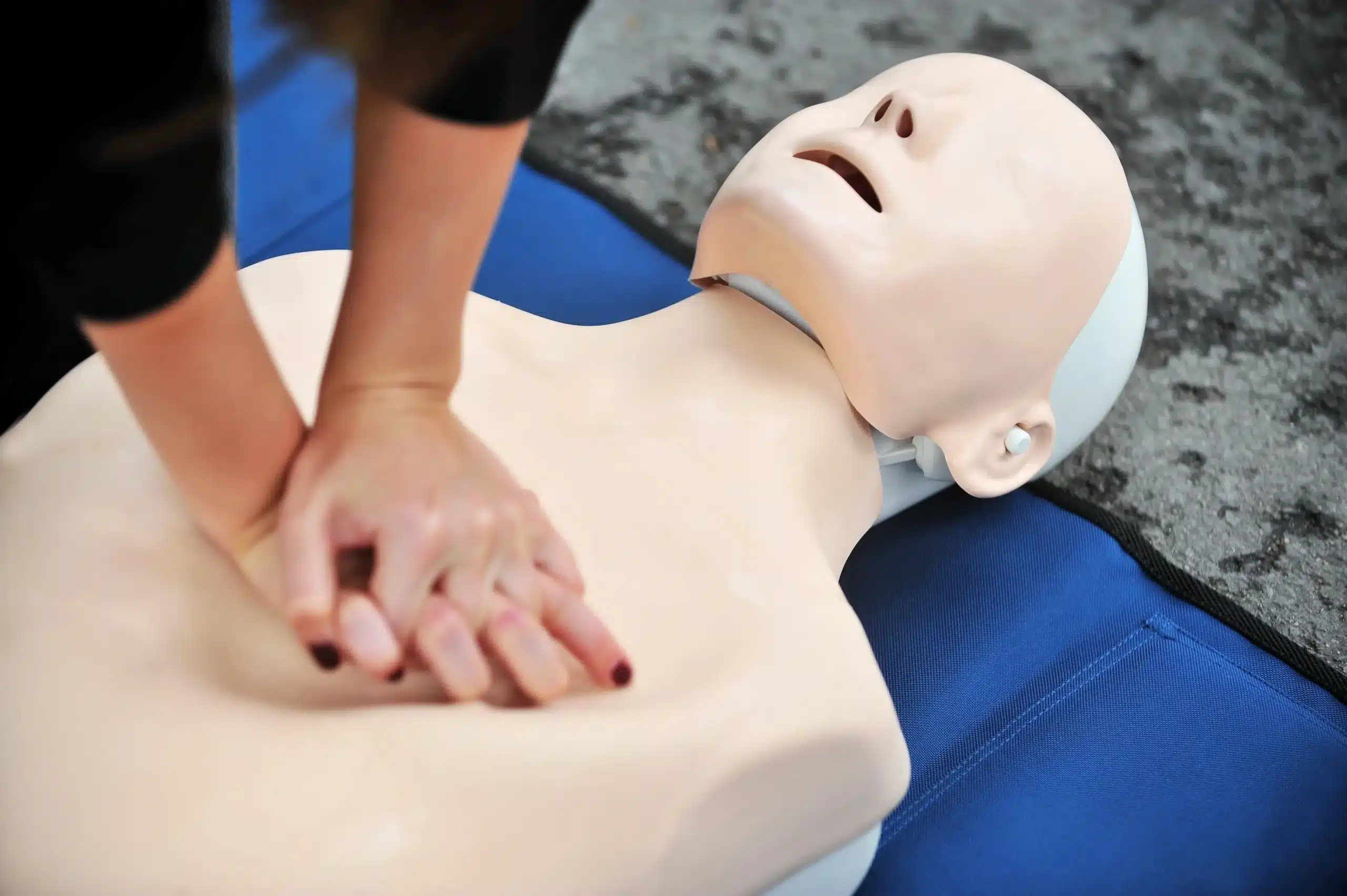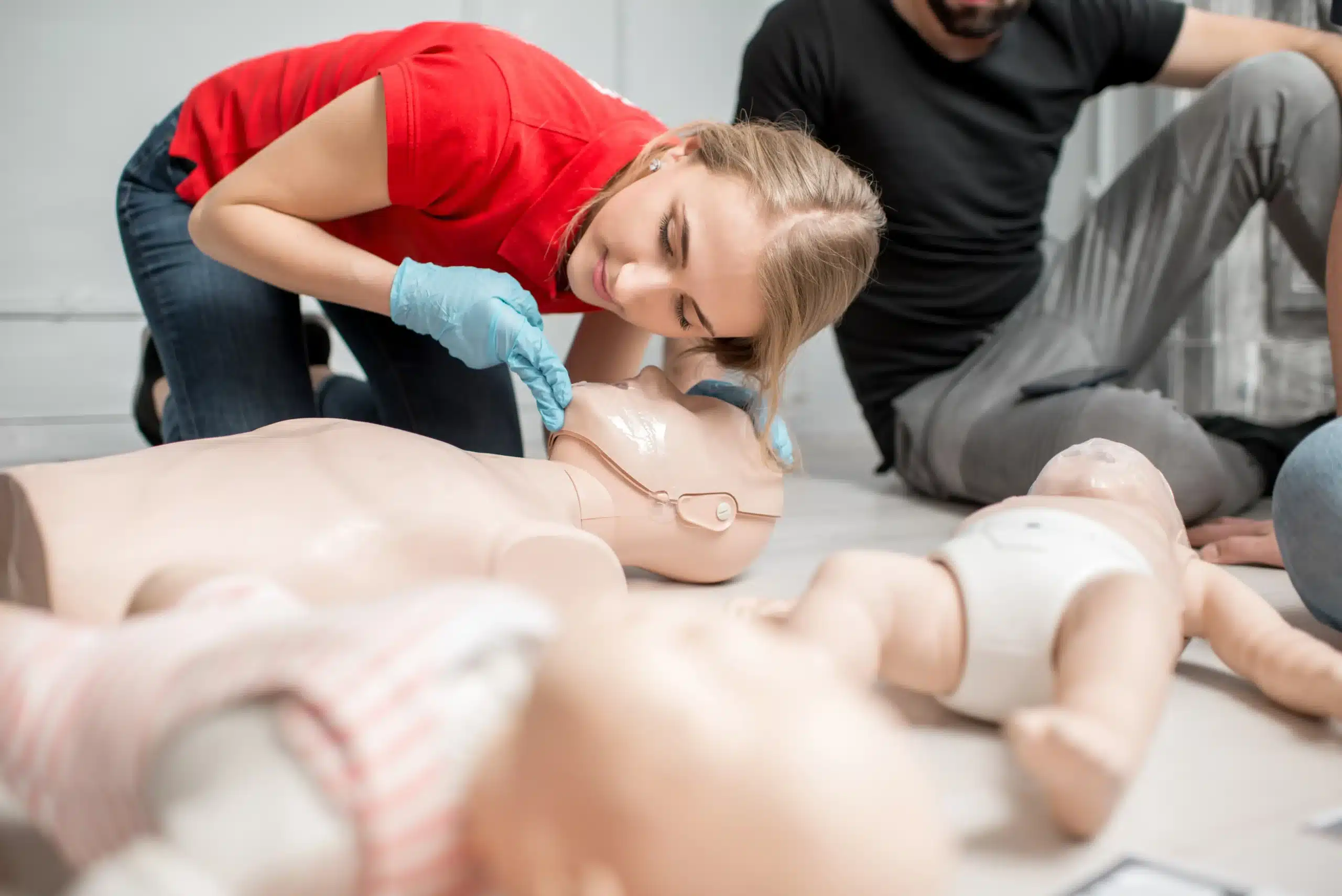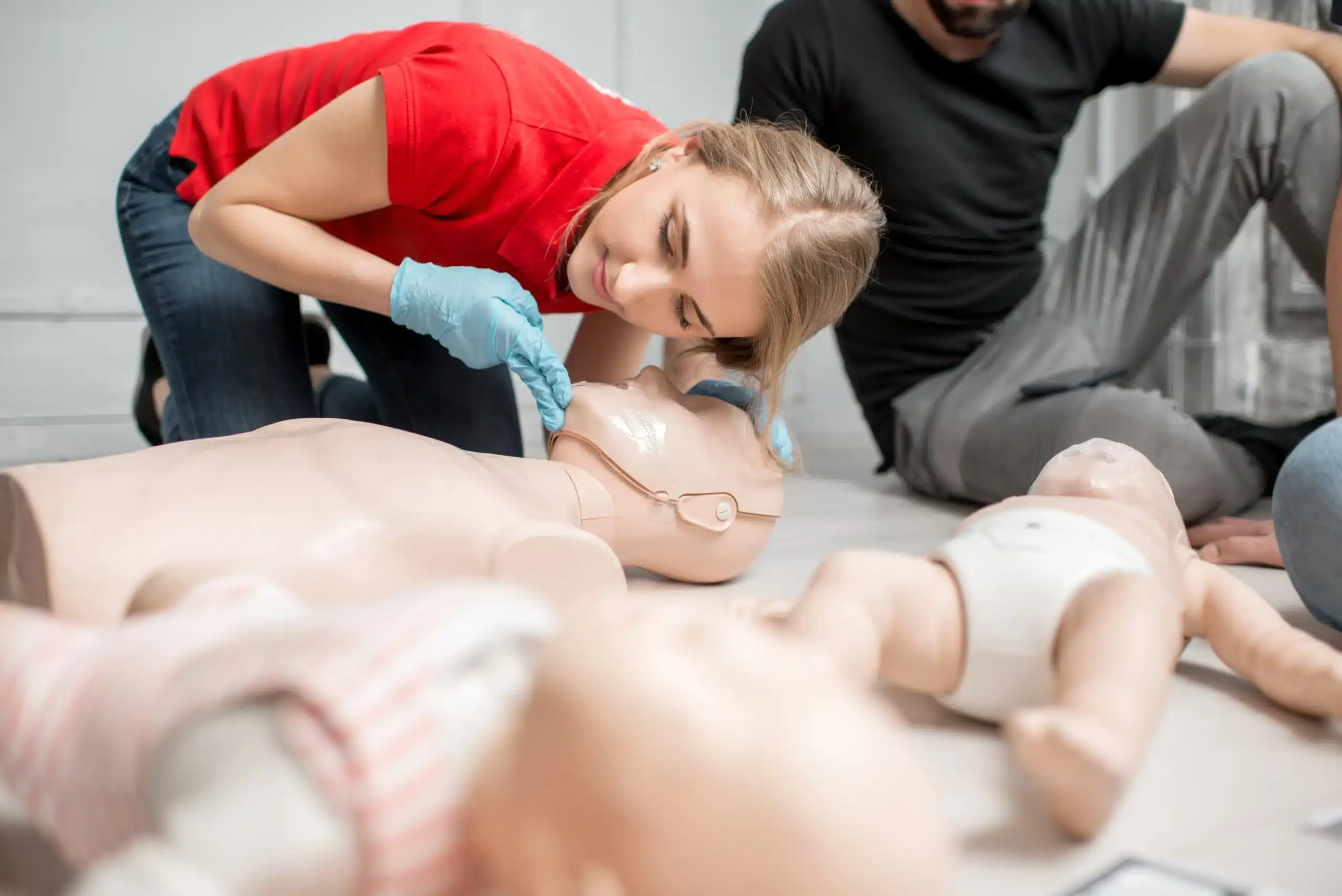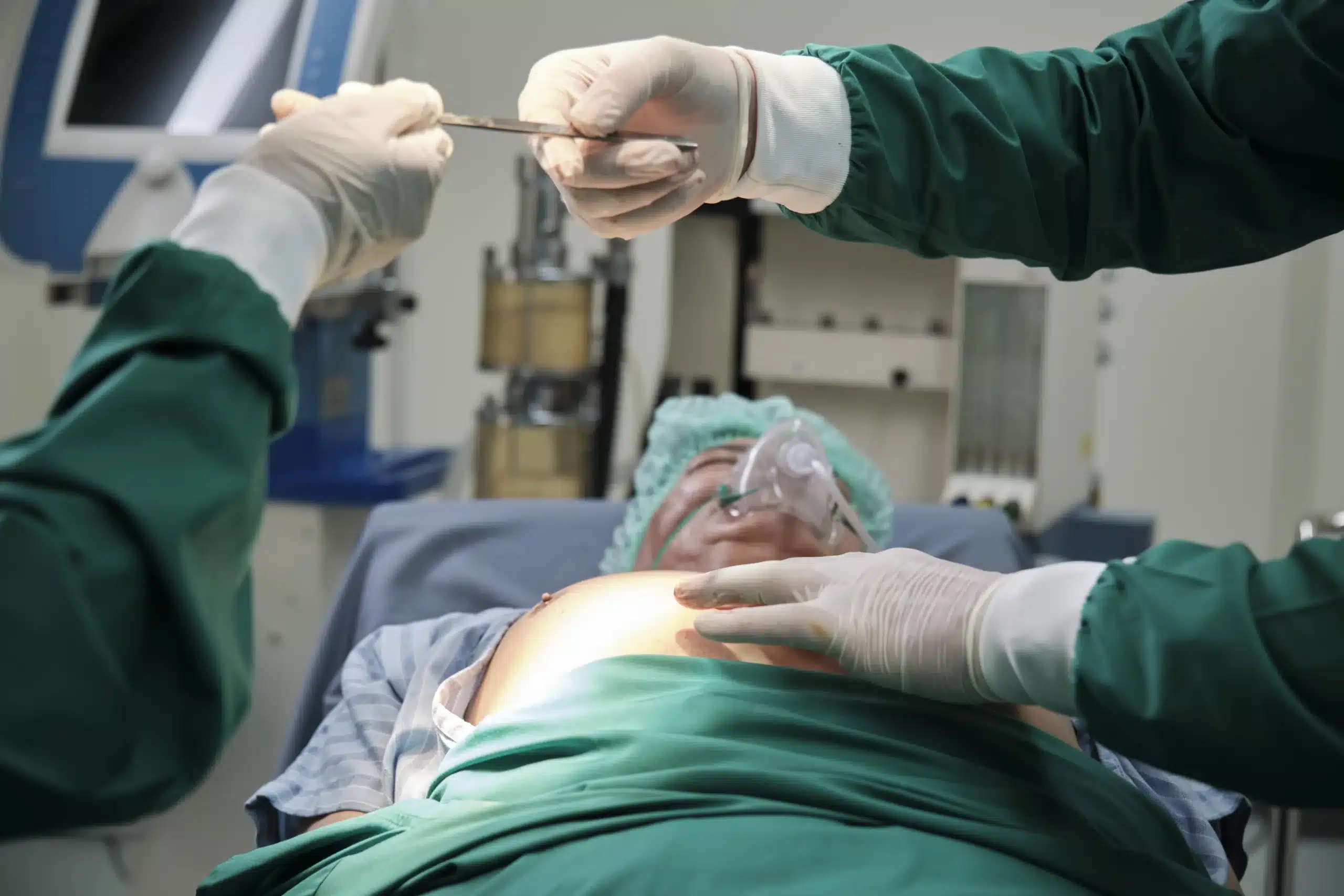Medical emergencies can happen anytime, anywhere. Would you know what to do? BLS training gives you the skills to respond effectively in such critical situations. This guide breaks down the essentials of BLS, including CPR, AED use, and airway management. We’ll also explore how to find “bls training near me”, compare different learning formats, and understand the certification process. Whether you’re a healthcare provider, a caregiver, or just someone who wants to be prepared, this guide will help you find the right BLS training to suit your needs and empower you to save lives.
Key Takeaways
- BLS skills empower everyone: From healthcare professionals to everyday people, BLS training equips you to handle medical emergencies and potentially save lives. Find a course format—online, in-person, or blended—that works for you.
- Select the right BLS course: When choosing a course, consider the training provider’s reputation, cost, instructor experience, and the balance of hands-on practice and theoretical learning.
- Prepare for your course and keep your skills sharp: Active participation, asking questions, and using practice resources will maximize your learning. Remember, regular practice is key to maintaining proficiency, so consider refresher courses or practicing with friends and family.
What is BLS Training & Why is it Important?
BLS stands for Basic Life Support. It’s a critical level of medical care used in emergencies like heart attacks, strokes, near-drowning incidents, or choking. BLS focuses on providing immediate support to maintain a person’s airway, breathing, and circulation until more advanced medical help arrives. It’s the foundation of emergency medical care and can dramatically increase the chances of survival.
Key BLS Skills
BLS training equips you with essential, life-saving skills. You’ll learn how to perform high-quality CPR for adults, children, and infants, including how to use an AED (automated external defibrillator). Airway management techniques are also a key component, covering how to clear an obstructed airway and provide rescue breaths. These skills empower you to respond effectively in various emergency situations.
Why BLS Matters for Healthcare Professionals & Everyone Else
BLS certification is crucial for healthcare providers like doctors, nurses, and EMTs, as it forms the basis of their advanced life support training. It ensures they can confidently manage critical situations and provide immediate care while waiting for additional resources. However, BLS isn’t just for medical professionals. Anyone can benefit from BLS training—parents, teachers, coaches, caregivers, or anyone who wants to be prepared to help in a medical emergency. Knowing BLS can make a profound difference in someone’s life. Consider our group discounts if you’re interested in training with a group.
Find Top BLS Training Near You
Finding the right BLS training program is crucial for your career and your confidence in emergency situations. Here are some reputable places to find BLS training:
Safety Training Seminars
Safety Training Seminars offers a range of American Heart Association (AHA) courses, including BLS certification, to prepare you for medical emergencies. Their training covers essential life-saving skills such as CPR, AED use, and airway management, ensuring you can respond confidently in critical situations. They also offer courses in RQI. For larger groups, they provide discounts and a low price guarantee. Safety Training Seminars serves Santa Rosa, Rohnert Park, and Windsor, CA.
American Red Cross
The American Red Cross provides BLS certification and recertification courses in various formats, including in-person and blended learning options. Their courses emphasize practical skills and real-life scenarios, aiming to enhance patient outcomes through comprehensive training. The Red Cross is a well-respected organization with a long history of providing reliable safety training.
American Heart Association
The American Heart Association (AHA) is a trusted name in emergency preparedness, providing BLS certification and recertification courses that are widely recognized. Look for training centers in your area offering AHA-certified courses for the most up-to-date and comprehensive training. Safety Training Seminars offers various AHA courses, including ACLS, in 60 cities in Northern California.
Local Hospitals & Medical Centers
Local hospitals and medical centers often provide BLS training courses tailored for healthcare professionals. These courses typically include hands-on training and are designed to meet the specific needs of medical staff, ensuring they are well-prepared for emergencies. Check with hospitals in your area to see what courses they offer and if they are open to the public or just for their employees.
Community Colleges & Vocational Schools
Community colleges and vocational schools frequently offer BLS certification courses as part of their healthcare training programs. These institutions provide a structured learning environment and often have experienced instructors to guide students through the certification process. This can be a great option for those looking for a more affordable and accessible way to get certified.
Choose the Right BLS Training Format
Finding the right BLS training format is key to getting the most out of your certification course. Let’s explore the pros and cons of different learning styles to help you decide what works best for your needs.
In-Person Training: Benefits & Considerations
In-person BLS training offers a hands-on learning experience ideal for those who thrive in interactive environments. You’ll learn essential, life-saving skills, from CPR and AED use to airway management, giving you the confidence to respond effectively in medical emergencies. The direct feedback from instructors is invaluable for perfecting your technique and improving skill retention. This format is especially beneficial for kinesthetic learners who absorb information best by doing. However, in-person classes require a fixed schedule, which may not work for everyone.
Online Courses: Flexibility & Limitations
Online BLS training courses offer incredible flexibility, allowing you to learn at your own pace and on your own schedule. This format is perfect for those balancing work, family, or other commitments. You can review materials as often as needed and adapt your study time to match your learning style. However, online courses sometimes lack the hands-on practice crucial for truly mastering life-saving techniques. While some online programs use virtual simulations, they don’t always replicate the experience of working with real equipment and interacting with instructors and peers.
Blended Learning: Combining the Best of Both
Blended learning combines the advantages of online learning with the hands-on practice of in-person training. This format typically involves online modules covering theoretical concepts, followed by in-person sessions for practical skills practice and assessment. Blended learning programs often facilitate communication between instructors and participants, creating a more engaging learning experience. This is an excellent option for those seeking a flexible learning schedule while still valuing hands-on training and instructor feedback.
BLS Certification: Cost, Time & Renewal
So you’re ready to sign up for a BLS course—fantastic! Here’s the lowdown on the time commitment, typical costs, and how to keep your certification current.
Course Length & Certification Validity
BLS courses cover essential skills like CPR, using an AED, and airway management. These skills give you the confidence to handle medical emergencies. A typical BLS certification is valid for two years.
Typical Costs & Value of BLS Courses
BLS course fees vary, but generally fall between $75 and $150. Safety Training Seminars offers competitive pricing on American Heart Association BLS courses, a crucial certification for healthcare providers. Think of BLS training as an investment in your ability to provide immediate care when it matters most. It’s invaluable.
Renewing Your Certification
Your BLS certification is valid for two years, so add a reminder to your calendar! Renewal courses are usually available within 30 days of your expiration date. Check with your certifying organization, like the American Red Cross, for their specific renewal process.
Group Discounts & Promotions
Signing up with a group? Look for discounts! Many training providers offer special rates for group bookings. Promo codes for CPR and BLS courses are also available online—a great way to save on essential training.
Safety Training Seminars’ Low Price Guarantee
Safety Training Seminars offers a low price guarantee, making sure you get the best possible value. This commitment to affordability makes high-quality BLS training accessible to everyone.
Prepare for BLS Training Success
Now that you understand the importance of BLS certification and have explored different training providers, let’s discuss how to prepare for a successful BLS training experience. Whether you choose online or in-person training, a little preparation goes a long way.
Prerequisites & Enrollment
Most BLS courses don’t have formal prerequisites. You don’t need prior medical experience to enroll. When selecting a BLS provider, consider factors like course format (online, in-person, or blended), cost, and the training center’s reputation. Look for certified instructors with a strong track record. Safety Training Seminars offers various BLS courses, including options for group discounts. Once you’ve chosen a course and provider, follow their enrollment instructions, which usually involve completing a registration form and paying the course fee. Our low price guarantee ensures you’re getting the best value for your training investment.
What Happens During the Course
BLS certification equips you with life-saving skills. You’ll learn CPR for adults, children, and infants, how to use an AED, and how to relieve choking. High-quality training programs emphasize hands-on practice and simulations of real-life scenarios. This gives you the confidence to assist in medical emergencies. Expect interactive sessions where instructors guide you through the techniques and provide feedback. Effective training includes clear communication between instructors and participants, especially feedback on your performance and opportunities to adjust and improve your skills. At Safety Training Seminars, we prioritize this interactive approach to ensure you gain practical, applicable skills. We cover all the required elements for American Heart Association certification.
Tips for Certification Success
A few simple strategies can maximize your learning and ensure you’re ready for the certification exam. For in-person courses, arrive on time, dress comfortably, and bring a notebook to jot down key points. If you’re taking an online course, minimize distractions by finding a quiet workspace. Don’t hesitate to ask questions or seek clarification on anything you’re unsure about. Take advantage of practice tests and quizzes to reinforce your knowledge. Finally, remember that BLS skills require regular practice. Consider attending refresher courses or practicing with friends or family to maintain your proficiency. Safety Training Seminars offers RQI classes to help you stay up-to-date on the latest BLS guidelines and techniques.
Related Articles
- BLS Classes in Santa Rosa: Your Complete Guide – Santa Rosa CPR Classes
- BLS Certification for Healthcare Providers in Santa Rosa – Santa Rosa CPR Classes
- BLS Courses in Windsor: Your Complete Guide – Santa Rosa CPR Classes
- BLS HeartCode Santa Rosa: Your Certification Guide – Santa Rosa CPR Classes
- BLS Renewal in Windsor: Your Simple Guide – Santa Rosa CPR Classes
Frequently Asked Questions
What is the difference between BLS and CPR? CPR (Cardiopulmonary Resuscitation) is a specific technique used within BLS. Think of BLS as the broader approach to life support, encompassing CPR, AED use, and airway management. BLS training teaches you CPR along with other essential skills to manage various medical emergencies.
How do I choose the right BLS training provider? Look for providers offering certification from reputable organizations like the American Heart Association or the American Red Cross. Consider factors like course format (online, in-person, or blended), cost, instructor experience, and the overall reputation of the training center. Reading reviews and comparing options can help you make an informed decision.
What if I don’t have any medical background? Can I still take a BLS course? Absolutely! BLS courses are designed for people of all backgrounds, with or without medical experience. No prior medical knowledge is required. The courses start with the basics and build up your skills through instruction and practice.
How long does BLS certification last, and how do I renew it? BLS certification is typically valid for two years. Renewal involves taking a recertification course, which is usually shorter than the initial certification course. Check with your certifying organization or training provider for specific renewal requirements and procedures.
What can I expect during a BLS course? Expect a combination of theoretical learning and hands-on practice. You’ll learn about CPR techniques for adults, children, and infants, how to use an AED, and how to manage airways. You’ll practice these skills in simulated scenarios to build confidence and proficiency. Instructors will provide feedback and guidance throughout the course.
